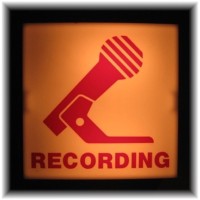


Recording With Your Computer - Getting Quality Tracks
It's important to get a good sound going in. Don't expect to fix a bad recording with EQ and effects. If the raw track isn't clean, 'go back, Jack, and do it again'. Laying down quality tracks is the key to producing a quality product. Take your time during setup to select the right microphone and mic placement. Recording a vocal or acoustic instrument? Have the artist play/sing while you listen in front of the performer. Pretend your ear is the microphone, and listen carefully as you move your head around. It's amazing how moving just a couple of inches can affect the sound. When you find the sweet spot, place the mic there. It's also helpful to put on headphones and listen carefully as a helper positions the mics. Are you left- or right-eared? If you don't know, take time to find out. Learning to trust your ears takes time, but it's a critical element of recording. Record stereo when appropriate. Acoustic guitars especially can benefit from a dual-mic, stereo recording. The phasing and frequency differences resulting in using 2 mics can add depth and fullness to a track. Also, using a 'room mic' (placed far from the source) can add natural room reverb to your vocals. You might want to record the tracks as a single, stereo WAV to start (easier for editing). Then when you're done recording and ready to mix, split the stereo track into separate, mono tracks (easier for EQing & adding effects). Awhile back, we had a great discussion in the forum on the 'Recommended Order of Recording'. These are Mac's thoughts, and Mac's thoughts are always worth noting. (Have you met Mac? Visit the forum and introduce yourself.) You're using proper equipment, right? Low end sound cards have a mic input. It's best not to use it. Even an inexpensive mixer will have a much better quality preamp than a computer sound card. Connect your mixer (or mic preamp) to the sound card Line In (bypasses the mic pre) instead. Many higher quality sound cards house their analog-to-digital (and their digital-to-analog) converters in a breakout (external) box. This moves the converters away from the inside of the computer where electrical interference can create high noise levels. Sound cards with breakout boxes are more expensive but can produce much improved signal-to-noise levels. Some cards also offer balanced inputs & outputs. Again, this helps keep noise to a minimum. DI (direct injection) boxes are invaluable when recording bass. An inline compressor is often wise for vocals and acoustic guitars. Have you tried a dynamic mic on that guitar cab? There are no hard and fast rules, but these are 3 setups that are generally accepted as best practices. Record it dry Most folks here agree that it's better to record tracks dry and add effects afterward. If you use effects during the recording phase, you're stuck with them. Add them during the Mixing phase, and you have much more control. Of course, there are always exceptions.
Record it hot (but not too hot) When laying tracks, you want to capture a signal that has plenty of gain (volume). The higher the gain, the less chance that noise (every system has noise) will be heard. The process of setting each mixer channel for optimum signal-to-noise ratio is called Gain Staging. As you record, use the Recording LED to monitor the gain of the signal being laid. For the highest signal-to-noise ratio, the peaks of your track should hit just below 0 (zero, or unity gain). HOWEVER, shooting for 0 isn't really wise for a couple reasons:
Keep it on time For heaven's sake, start your project with a click track! Most DAW software has a metronome, but many of us prefer to use a wave editor or drum sequencer to generate a click. Either way, convert it to WAV and import it into your song. This is the best way to assure a steady tempo. And a steady tempo is critical when doing overdubs. Home ~ Getting Started ~ Recording ~ Mixing ~ Mastering ~ Promotion ~ Troubleshooting ~ Contact Us  If you have a question about Audio, please Visit Our Forum: Audiominds.com Forum. Copyright © 2003 www.AudioMinds.com All Rights Reserved. |